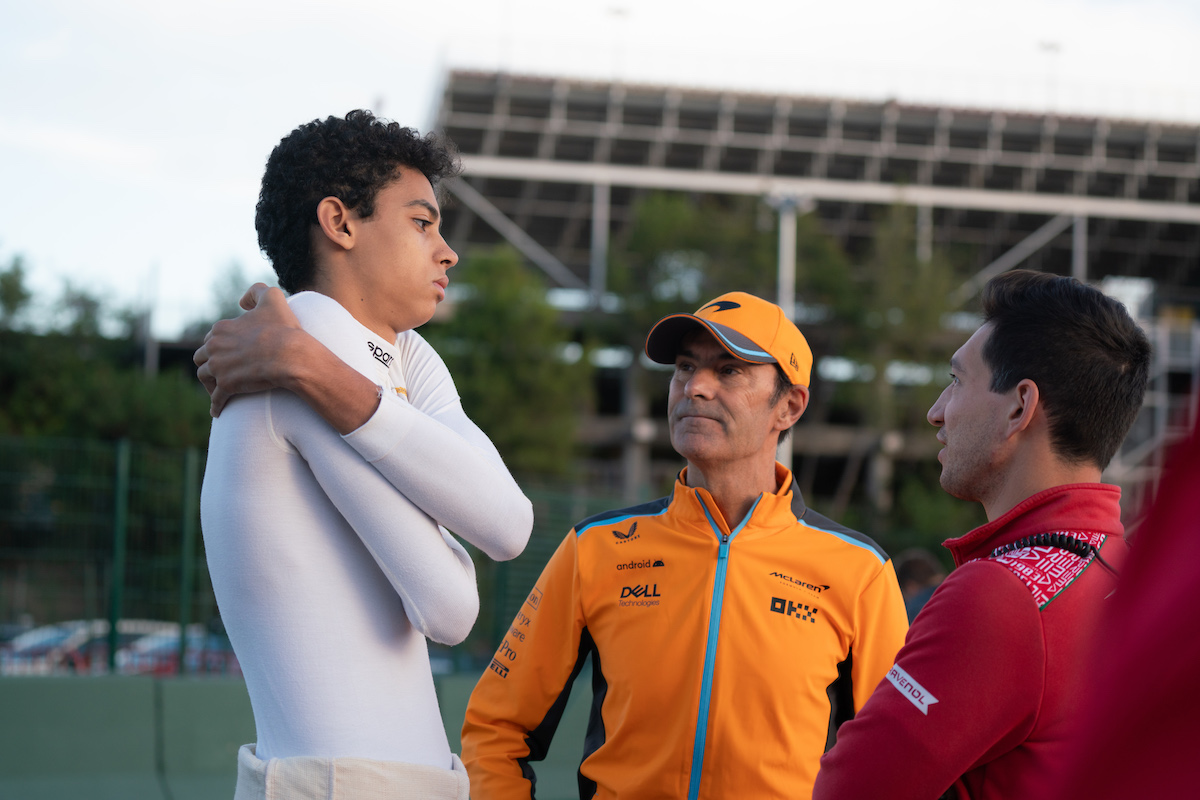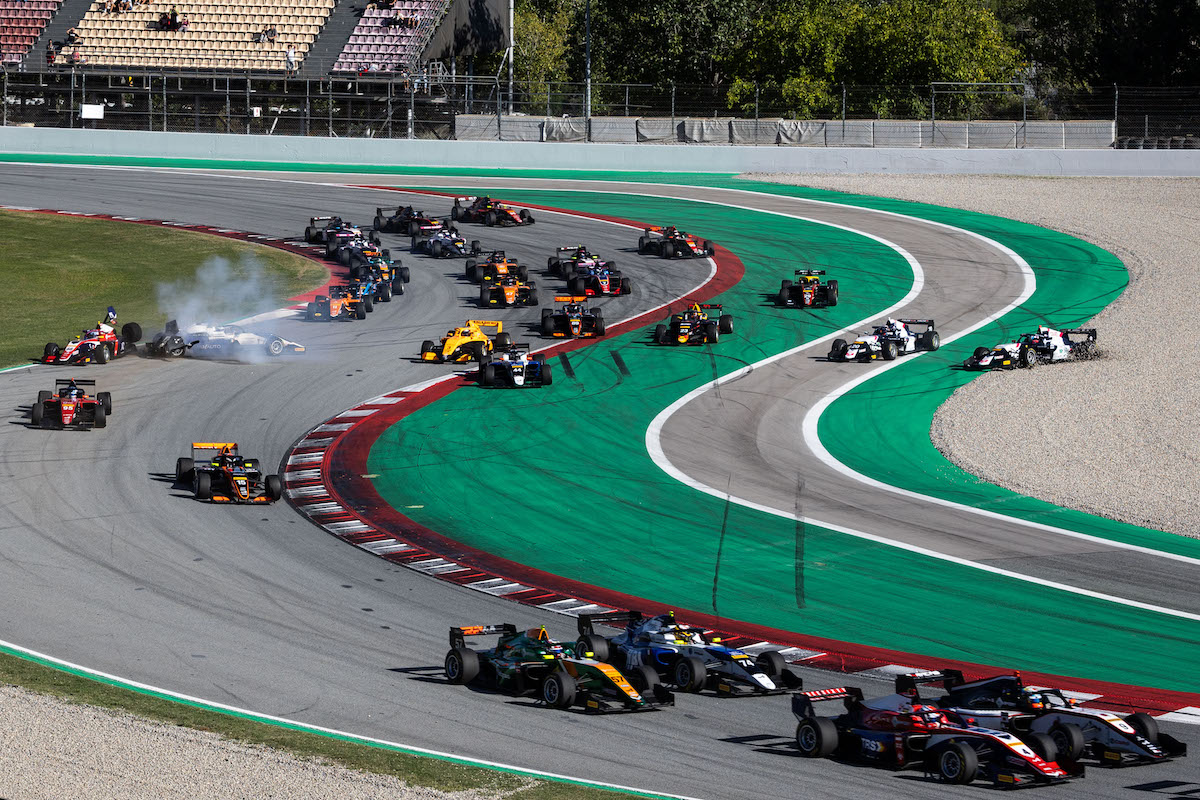
Photo: ACI Sport
Emanuele Pirro has taken over as the FIA’s single-seater president and, in conversation with Formula Scout, set out his main priorities in the role
Limiting the rocketing costs of competing at the lower levels of motor sport and dealing with deteriorating driving standards are the top priorities of Emanuele Pirro, president of the FIA’s Single-Seater Committee.
Pirro, who succeeded Giancarlo Minardi in the role in May 2024 after leaving his driver development role at McLaren, sat down with Formula Scout to outline his concerns about the world of junior single-seater racing.
The former Formula 1 driver and five-time winner of the Le Mans 24 Hours is a highly-respected figure in the racing world. He is an old-school racer at heart, someone for whom the values and principle of fairness still matter.
He has sought out the opinions of various stakeholders – teams, drivers, circuits, promoters and national sporting authorities – as he looks to address the most important issues facing the sport.
“I’m a reasonable person. I’m not a dictator. I really listen to a lot of people. I am a balanced person. I’m not somebody who cuts things with a sharp knife. That is not my personality. But I’m somebody who is not afraid of bringing up ideas if he and the people around him believe they’re right,” he says.
He considers that the fact that “I didn’t ask for this position” means his voice carries more weight with the multiple stakeholders.
“The minute I published that I was leaving McLaren, my phone rang, and they offered me this position. I am very happy and proud that they asked me, don’t get me wrong, but I don’t need to be here and so I don’t need to protect my seat,” he argues.

Acknowledging that “every decision has an impact, positive to some entities, less positive to some others,” he is determined to drive change in two main areas: costs and on-track safety.
Budgets have exploded in recent years at all levels, partly due to inflation, but also due to the unending search for performance.
Pirro admits that it is still “a little bit too early” to discuss details, but is, he says, “determined and I’d be disappointed if major things don’t happen.”
He admits that with FIA Formula 2 and Formula 3 operated independently by Formula Motorsport Limited, part of the Formula One Group, the power of the FIA to manage costs there is limited, even if “the closer you go to F1, it is definitely beneficial to make it cheaper.”
His focus is by necessity, therefore, on “the entry level, because when you are in F2 or F3 you know already whether you have it or you don’t have it.”
Budgets of over half a million euros are not unknown for a season in Formula 4, the foundation of the FIA’s junior pyramid structure.
“Nowadays, we are, I would say, lucky, in brackets, that there are a large number of very wealthy people around the world that can afford motorsport. But the sport has a responsibility not to follow this demand too much, because if things change then you end up with a very expensive motor sport,” he says.
Therein lies the nub of the problem, something that Formula Scout has been highlighting since the departure of respected teams, such as Mucke Motorsport, and the death of championships like ADAC F4. While competitors may complain about rising costs, the drivers, and their backers, whether parental or commercial, demand and expect almost unlimited testing, which drives up the costs enormously.

Photos: ADAC
While solutions such as standardising parts can contribute to savings, the key is “reducing track time,” he believes. “You can reduce the cost of clothes but if you still want to have 50 shirts in your wardrobe…”
He is realistic enough to understand that there is no watertight solution. “There will [always] be somebody who works around it, but if you’re waiting for something with 100% success, you will never change it. So you have to be brave [but] start with something that makes sense.”
So, rather than preventing teams and drivers (and their parents or sponsors) from spending whatever they can afford, and often more, his aim is to limit the value of such spending, to ensure that there are rapidly diminishing returns from spending above a certain level.
“My personal wish or dream is not to make [competing] cheaper, but to make sure that one more euro buys as little extra performance as possible. If somebody wants to spend €2 million for an F4 season, I want to make sure that their advantage is as small as possible. This is my philosophy.”
“Long term, if a championship is more affordable, it cannot be bad,” he says. Amen to that, and few would disagree, but in practice it has proved close to impossible to prevent those with money available from spending it to find a few 1/1000ths of lap time.
On a related note, Pirro challenges the perception that ever-larger entry lists are positive for the sport.
“Nowadays, the health of a championship is nearly always measured by number of entries. ‘How is your championship? I’ve got 24 cars, a full grid, it’s great’

Photo: Dutch Photo Agency
“It is quality that we should look for, not the quality of the drivers necessarily, [but] the quality of the whole thing. The top teams in F4 basically can’t answer the phone for the number of people that want to race for them and are willing to pay this much. Is this really what motor sport needs? Or maybe it is something more affordable, more simple.
“When you go to a higher level, let’s talk about Formula 1, which is the highest level, quantity was never sought. We only talk about quality, why should we have a different approach in the lower formulas?”
Limiting grid sizes might mean politely turning away drivers who do not meet the necessary standards. “Sport is meritocracy. There are different disciplines in motorsport, so we should not enlarge the grids and the circuits just because the demand is higher,” he maintains.
But the topics which really ignite Pirro’s passion are driving standards and safety more widely. In previous roles with the FIA, he has been an F1 steward and a driving standards officer in F3.
“I am convinced that motorsport has done a wonderful part in terms of passive safety, [by which] I mean protecting drivers and officials during an accident, let’s say.”
What is lacking still, however, are measures to prevent an accident in the first place – circuit layout and driving standards, which have “deteriorated a lot,” he believes.
If you watch a race, from “30, 20, even 10 years ago the attacking and defending manoeuvres were much, much different,” he argues. “Things that are done today you couldn’t even think about years ago.
“In an F4 race almost one third of the laps are behind the safety car, meaning not so far off 50% of the race [duration] is behind the safety car. People don’t pay to run behind the safety car. It’s crazy!

Photo: ACI Sport
“We are so lucky that we get so many warnings, so many close calls of accidents, but somehow, disappointingly, motorsport has reacted, in my opinion, too strongly and sometimes too emotionally, only after fatalities.”
He adds that motor racing needs to “learn from the close calls and anticipate the fatalities before they happen and trying to improve the driving standards is really a must.”
Pirro believes that higher safety has reduced the fear factor for drivers. With drivers now entering F4 as soon as they turn 15, the average age of drivers on the grid is much lower than in his day. “A young kid does not have the same perception of how much he risks as an [older] kid. You feel so protected and there is so much space around you.”
Everyone is in a hurry to move up the ladder and competition on track is fierce. While accepting that aiming for F1 is nothing new, he says “somehow I think now, maybe they try even harder.”
Back in the day, says Pirro, “when somebody was in your tow, at a circuit like the old Hockenheim, he would overtake you on the straight. You would not even think about putting him on the grass or zigzagging. Were we stupid? Were we gentlemen? We were maybe a little bit naive, but we knew that if somebody did something to you, immediately after, you would do it [back].”
There was no need for penalties for impeding in qualifying, because “for sure, if you block me today, the next qualifying I’ll wait for you and I’ll block you. I’m not saying this was right [but] there was a self policing.”
“We live in a different world,” he shrugs.
He is unsurprisingly reluctant to point the finger at any one driver but observes that “tactics” like moving under braking, “have been developed in the course of time by professionals,” meaning those at the supposed pinnacle of the sport, F1.

Photo: Red Bull
“When I was a steward in F1, I was very, very strong in trying to modify the rules and to cover this moving under braking. I was the first to address it with [Max] Verstappen and [Lewis] Hamilton, and to ask to enforce the penalty, not because I fear that they do something wrong. They know very well what they do, but they are copied by less capable people and then it’s a mess.”
He has been around long enough to know that changing attitudes to what is acceptable behaviour on track “is difficult, because it requires education at all levels, including officials, and basically resetting everything. The drivers’ commission [of which Pirro is still a member] wrote this driving standards document, but I really believe that work should be done before it’s too late.”
He draws the analogy with track limits where an approach has developed, or been allowed to develop, of “three strikes, plus one black and white [flag] and then a penalty. The drivers know exactly at which number they are, so you will have at least four strikes per driver.”
Interestingly, he explains how this rule, even though personally he “wasn’t really in favour,” was intended to remove the time-consuming and subjective assessment of whether a track limits infraction had resulted in the driver gaining an advantage.
The decision was therefore taken to give everybody three “free passes” to cover the few instances where a driver had been forced off track, or run wide through a driver error. But the thinking hasn’t been well explained to the public, says Pirro. “In Austria, in F1, [Lando] Norris was penalised for the last one,” even though it seemed harsh to penalise a driver for being edged off the track in a duel for position, but actually it was for “the other four [times when] he had gained.”
Pirro is relaxed about a driver weaving on the straight to break a tow, “because you only make your straight longer.” What he believes you shouldn’t be allowed to do is to “move as a reaction to an action. What is really not fair is that somebody has a run on you, and you force him to back off, or push him off track.

“We are working to incentivise overtaking, finding gadgets [like DRS] and then you give too many tools to the defending driver to defend himself.
“The young kids need very strong regulation. It’s like school. You have more respect for the teacher who is very hard but very good and keeps the classroom silent than the teacher who doesn’t have this ability, and it’s a mess and the kids don’t learn anything.
“You have to be firm. Penalising people hurts, but by penalising one you help 29 other people,” he believes.